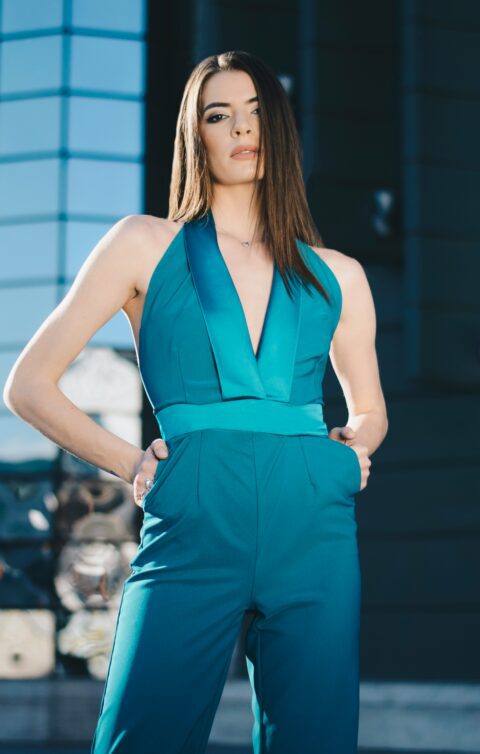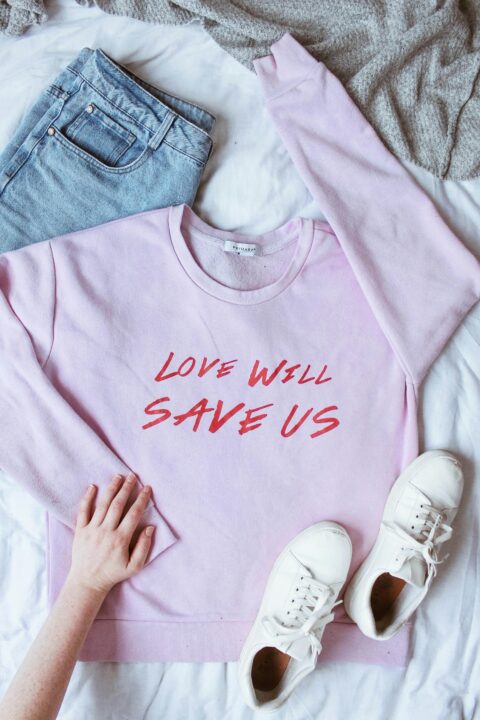Introduction to the Changing Landscape of Fashion
Fashion has always been a dynamic and ever-evolving industry, constantly pushing the boundaries of creativity and self-expression. But in today’s rapidly changing world, the landscape of fashion is transforming at an unprecedented pace. From sustainable and ethical practices to embracing diversity and inclusivity, charting new territories in style has become more important than ever before.
Gone are the days when fashion was solely about trends and glamour. The rise of sustainable and ethical fashion has revolutionized the way we perceive clothing. With increasing awareness about environmental issues, consumers are now demanding transparency from brands regarding their sourcing methods, production techniques, and supply chain ethics.
Furthermore, the industry is finally starting to recognize that beauty comes in all forms. Embracing diversity means celebrating different body types, skin tones, ages, abilities – essentially dismantling narrow standards of beauty that have plagued it for far too long. Inclusivity is no longer just a buzzword; it’s becoming ingrained within every aspect of the fashion realm.
Technology has also made its mark on fashion by enabling innovation like never before. From 3D printing to virtual reality experiences during runway shows – technology is reshaping how designers create garments as well as how consumers engage with them. It’s making fashion more accessible while pushing creative boundaries beyond imagination.
Another significant shift happening right now is the exploration of gender-neutral and non-binary fashion. Traditional gender norms are being challenged as individuals seek clothing that reflects their true identities rather than conforming to societal expectations. This movement towards fluidity allows for greater freedom in personal expression through style choices.
Of course, social media plays an undeniable role in shaping contemporary fashionscape too! Platforms like Instagram have given rise to a new breed of influencers who wield immense power over consumer preferences with their curated feeds showcasing unique styles and coveted designer collaborations.
In this blog post series “Fashion Frontier: Charting New Territories in Style,” we will dive deep into these exciting developments and explore how they are shaping the future of fashion. Join us as we uncover
The Rise of Sustainable and Ethical Fashion
The fashion industry has long been associated with excess, waste, and exploitation. However, a seismic shift is taking place as more and more consumers demand sustainable and ethical fashion options. This rise in conscious consumerism is pushing brands to reevaluate their practices and embrace a more responsible approach.
One of the key aspects of sustainable fashion is the use of eco-friendly materials. Designers are turning to innovative fabrics made from recycled fibers or organic sources such as bamboo or hemp. These materials not only reduce the environmental impact but also provide high-quality garments that can stand the test of time.
In addition to material choices, ethical fashion focuses on fair labor practices. Brands are increasingly prioritizing transparency in their supply chains, ensuring that workers receive fair wages and safe working conditions. This commitment extends beyond factory workers to encompass all those involved in the production process.
Furthermore, sustainable and ethical fashion promotes circularity by embracing concepts such as upcycling and recycling. Instead of discarding old clothing items, they are repurposed into new designs or transformed into raw materials for future creations. This reduces textile waste while giving new life to pre-existing garments.
Consumers also play a vital role in driving this movement forward by making informed purchasing decisions. By supporting brands committed to sustainability and ethics, individuals have the power to influence change within the industry itself.
The rise of sustainable and ethical fashion signifies a shift towards a more conscious mindset among consumers who recognize that style does not have to come at the expense of people or our planet. It represents an exciting opportunity for designers and consumers alike to chart new territories in style while creating positive social impact along the way
Embracing Diversity and Inclusivity in the Industry
The fashion industry has long been criticized for its lack of diversity and inclusivity. However, in recent years, there has been a significant shift towards embracing all individuals, regardless of their race, ethnicity, gender identity, or body type.
Fashion brands are beginning to recognize the importance of representing diverse models on the runway and in advertising campaigns. This move towards inclusivity not only helps to challenge traditional beauty standards but also allows people from different backgrounds to see themselves represented in the industry.
Moreover, many designers are now creating clothing lines that cater to a wider range of sizes and body types. This is a positive step forward as it promotes body positivity and empowers individuals to feel confident and comfortable in their own skin.
In addition to size inclusivity, there is a growing movement towards gender-neutral and non-binary fashion. Many brands are challenging the binary concept of male/female clothing by offering more versatile and inclusive designs that can be worn by anyone.
It’s important to note that embracing diversity goes beyond just representation on the surface level. Fashion companies must also address issues such as fair labor practices within their supply chains and promote sustainable manufacturing processes.
Embracing diversity and inclusivity in the fashion industry is not only necessary but also beneficial for everyone involved. It allows for greater creativity, innovation, and ultimately leads to a more authentic representation of society as a whole.
Technology’s Impact on Fashion
Technology has revolutionized every aspect of our lives, and the fashion industry is no exception. From design to production to retail, technology has made its mark in transforming traditional practices and pushing the boundaries of what was once possible.
One significant impact technology has had on fashion is the rise of e-commerce. With just a few clicks, we can now browse through countless online stores, finding unique pieces from designers all over the world. This convenience and accessibility have opened up a whole new world for consumers and designers alike.
Another area where technology shines is in virtual reality (VR) and augmented reality (AR). These immersive technologies allow customers to try on clothes virtually or visualize how an outfit will look before making a purchase. It not only enhances the shopping experience but also reduces return rates as customers have a better idea of what they are getting.
3D printing is yet another game-changer in the industry. Designers can create intricate patterns and structures that were previously impossible with traditional manufacturing methods. This allows for more sustainable production processes by reducing waste and utilizing materials efficiently.
Artificial intelligence (AI) plays a crucial role in personalizing fashion recommendations based on individual preferences and browsing history. AI algorithms analyze vast amounts of data to curate personalized suggestions, making it easier than ever for consumers to discover new styles that match their tastes.
Furthermore, social media platforms have become powerful tools for both brands and consumers alike. Influencers can showcase different styles through visually appealing posts, leading to increased brand awareness and engagement with potential buyers.
As technology continues to evolve at lightning speed, so too does its impact on fashion – from innovative fabrics made from recycled materials to smart textiles embedded with sensors that monitor health parameters while being worn. The possibilities seem endless!
In this fast-paced digital age, it’s clear that technology’s influence on fashion will only continue to grow stronger. As consumers embrace these technological advancements, they gain access to more choices while having greater control over their fashion choices. It’s an exciting time to be a part of the fashion
Exploring Gender-Neutral and Non-Binary Fashion
Exploring Gender-Neutral and Non-Binary Fashion
Fashion has always been a form of self-expression, allowing individuals to showcase their unique style and personality. In recent years, there has been a growing movement towards gender-neutral and non-binary fashion, breaking down traditional norms and embracing inclusivity.
Gender-neutral fashion challenges the idea that clothing should be categorized based on binary genders. It blurs the lines between what is considered “masculine” or “feminine,” offering individuals the freedom to wear whatever they feel comfortable in, regardless of societal expectations.
Non-binary fashion takes this concept even further by rejecting the notion of gender altogether. It celebrates individuality and allows people to express themselves authentically without conforming to any specific gender identity.
Designers are responding to this demand for more inclusive fashion by creating collections that cater to all identities. They are reimagining classic silhouettes with neutral colors and clean lines, ensuring that anyone can find pieces that resonate with them.
Celebrities and influencers have also played a significant role in promoting gender-neutral fashion. By wearing these styles confidently on red carpets or social media platforms, they help normalize it and inspire others to embrace their true selves through their wardrobe choices.
The rise of online platforms like Instagram has made it easier than ever for individuals who identify as non-binary or beyond the traditional confines of gender expression to connect with each other. Communities have formed where people can share tips, tricks, outfits, and encouragement – fostering a sense of belonging in an industry historically dominated by rigid standards.
As society continues to evolve towards acceptance and understanding, it’s essential that the fashion industry follows suit. By embracing gender-neutral designs and celebrating diversity in all its forms, we create an environment where everyone feels seen, heard, valued – truly represented within mainstream culture.
In conclusion,
Gender-neutral and non-binary fashion represents a powerful shift in our perception of style; one that acknowledges individuality instead of conforming to societal expectations. As we continue to explore new frontiers in the
The Influence of Social Media and Influencers
Social media and influencers have revolutionized the fashion industry, opening up new avenues for creativity, inspiration, and marketing. With platforms like Instagram and YouTube at their fingertips, individuals with a keen eye for style can now become tastemakers in their own right.
Influencers have become powerful brand ambassadors, using their social media presence to showcase clothing and accessories to millions of followers. They offer a more relatable way for consumers to engage with fashion by sharing personal styling tips, outfit ideas, and product recommendations.
The rise of social media has also democratized the fashion industry, providing opportunities for emerging designers and independent brands to gain exposure without relying solely on traditional gatekeepers. Influencers often work closely with these smaller labels, helping them reach wider audiences who are hungry for unique and niche designs.
Furthermore, social media has fueled conversations around body positivity and inclusivity in fashion. Influencers of all different sizes, ethnicities, genders,and abilities use their platforms to challenge societal beauty standards while promoting self-love and acceptance.
However,the influence of social media is not without its flaws. The pressure to constantly curate an aesthetically pleasing feed can lead influencers down a path of excessive consumerism and superficiality. Additionally,the rise of sponsored content has raised questions about authenticity within the influencer community.
Yet despite these challenges,social media remains an incredibly influential force in shaping trends,promoting sustainability,and connecting people from all corners of the globe through fashion.
Being aware of both its positive impact as well as its limitations allows us to navigate this digital landscape mindfully.
So next time you scroll through your favorite platform,take a moment to appreciate how it’s transforming the world of style before your eyes!
Conclusion: The Future of Fashion and What It Means for Consumers
The future of fashion is an exciting and ever-evolving landscape, with endless possibilities for innovation and creativity. As consumers, we have the power to shape this future by making conscious choices that support sustainable and ethical practices, embrace diversity and inclusivity, harness the potential of technology, and challenge traditional notions of gender in fashion.
By supporting sustainable and ethical fashion brands, we can contribute to a more responsible industry that values both people and the planet. This means seeking out clothing made from eco-friendly materials, supporting fair trade practices, and advocating for transparency throughout the supply chain. In doing so, we can help create a world where fashion is not just about looking good but also about feeling good about our choices.
Embracing diversity and inclusivity in the industry is essential for ensuring that everyone feels seen and represented. Fashion should be a reflection of our diverse society, celebrating different body types, ethnicities, genders, ages, abilities – you name it! The push towards greater inclusivity means breaking down barriers that have historically excluded certain groups from participating fully in the world of fashion.
Technology has already had a profound impact on various aspects of the fashion industry – from design to manufacturing to retail. From virtual reality runway shows to 3D-printed garments to personalized shopping experiences through AI algorithms – technology continues to revolutionize how we engage with fashion. As consumers become increasingly tech-savvy and demand more personalized experiences online or offline – brands will need to adapt quickly or risk being left behind.
Exploring gender-neutral and non-binary fashion challenges societal norms around clothing as strictly male or female. This emerging trend allows individuals to express their identities freely without conforming to traditional binary expectations. By breaking down these rigid boundaries in clothing options – there’s room for self-expression beyond restrictive labels.
Social media platforms like Instagram have transformed how we discover trends; influencers play an influential role in shaping consumer preferences today than ever before! These digital tastemakers have the power to make or break brands and can quickly propel a fashion trend into







